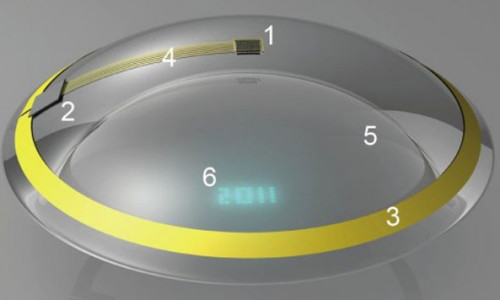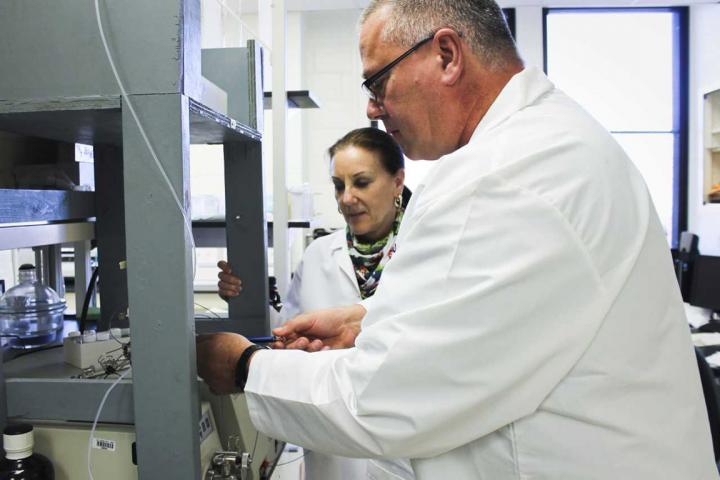It has finally been done: A team of US and Finnish bioengineers have embedded an antenna, radio receiver, control circuitry, and LED into a wearable contact lens. If you’re a rabbit, you can hop along to their research lab at the University of Washington, Seattle, and try it out right now — but if you’re a human, you’ll still have to wait a couple more years for the bionic, Terminator-like HUD of your dreams.
The team, led by Babak Parviz, has successfully displayed a single, remotely-controlled pixel onto a contact lens worn by a rabbit. Power from an external battery is transmitted via RF to an antenna that runs around the edge of the contact lens (the gold ring that you see in the image below), so that the wearer’s vision isn’t obstructed. An integrated circuit harvests the energy, and then powers an LED (which emits a nice blue light, incidentally, and is focused by way of the entire contact lens being a Fresnel lens). The IC doesn’t do much else at the moment — it’s basically just a 450 picofarad storage capacitor built with a 130nm CMOS processor — but this is enough to discretely control an on-lens pixel from a remote radio source.
There are caveats, of course: The single-pixel contact lens display, because of its tiny antenna, has to have a power source within 10cm (it’s very similar to RFID/NFC in this regard). This problem could be overcome with a battery pack hooked over your ear, though (or if you’re a hardcore transhumanist, embedded into your scalp or spine). The other issue is that this is just a single pixel — but even there, you can imagine military uses (“missile lock!”) or perhaps just as a custom notification (“you have email!”)
Niggles aside, this invention is significant because the rabbit was alive, and no damage to the rabbit’s eye was found after the lens was removed. The research team have already drawn up plans to project multiple pixels onto a single contact lens by using an array of micro-Fresnel lenses, too (see main image). The point is, our grasp of semiconductors and optics is now so advanced that we can shrink all of the necessary components for a computer display into a contact lens. Bionic vision really is just around the corner now.
Read more at the Journal of Micromechanics and Microengineering (free registration required)
Story Source:
The above story is reprinted from materials provided by Extreme Tech, Sebastian Anthony.





